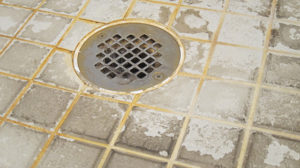Trees are beautiful for landscaping around your home and provide lots of shade during hot summer months, but beware! The roots from these beauties are the number one cause of sewer line damage in homes and are definitely the most expensive sewer maintenance problem as well. These roots can cause major backups in your system, or worse case scenario, can even cause a complete collapse of your system. Learn how to prevent and maintain your pipes from this damage, or, if you’re already experiencing a problem, learn what you need to do to stop these roots from causing any further damage.

How do roots get into my pipes in the first place?
A tree’s roots are actually made up of a couple different parts; the larger more permanent roots, located closer to the base of the tree, are for support and stabilization, and the smaller, more hair-like roots which travel away from the tree, are for water and nutrient absorption. When water travels through your pipes, its warmth radiates vapors in the piping, but if a small crack or leak is apparent, or if any of the joints are loose, these vapors radiate out into the soil surrounding the pipe. The small hair-like roots of the tree attract toward these vapors and enter the pipes at these small cracks and leaks or loose joints looking for water and nutrients. This is mostly apparent during hot summer or drought periods, or extremely cold winter months when there is no rain.
How do the roots affect my pipes though?
The hair-like roots will begin to grow within the pipe and form masses surrounding each point of entry. As you continue to use your sinks & showers, debris from your drains flows through these pipes trying to make its way to the main sewer line, but like a net, the roots become a catchall for this debris and slowly begin to clog your pipes causing backups and reduced flow in your drains. If not taken care of, these roots can cause a complete blockage in your drains, or worse, the roots will expand putting lots of pressure on the crack where they entered, causing the pipe to break and a complete collapse of your pipes to occur.
What do I do if I’ve already noticed my drains begin to slow?
Since the problem is underground and out of sight, it is usually kept out of mind until it’s too late. Slowing of your drains and gurgling from your toilets though, are the two biggest indicators of root intrusion in your pipes. Your best bet is to call a local plumber as soon as possible, like Daniel Cordova Plumbing, Drain & Sewer, to come check out the problem. Often a sewer camera inspection can help determine the extent of the damage; If the damage is minor, a plumber can remove the roots by using a root saw or a high pressure flushing system, but if the damage is severe, where the pipes are structurally damaged, they might require complete replacement.
How can I prevent roots from entering my pipes?
The best way to prevent root intrusion is first, to make sure that when you plant or re-plant trees and other shrubs around your home, that you find out where your sewer lateral pipe is located, the pipe that connects your home plumbing system to the main sewer line, beforehand, and make sure to plant at least ten (10) feet away from it. Second, is to schedule a regular cleaning of your sewer lateral pipe. Once roots have already entered your pipes though, and once you have had them cut or cleaned out, it is important to keep up with this maintenance because when cut from the inside of the pipe, the root is still located at the same entry point and will continue to grow eventually causing a major break of the pipe.
Since the sewer line is located in city property though, wouldn’t they have to take care of it?
Keep in mind that although the sewer line is generally located in the street, which IS city property, homeowners are still responsible for maintaining their sewer lateral pipe that connects their home plumbing to the sewer line.
Summing everything up, what is the overall story about root intrusion in my pipes?
Overall, roots can cause a lot of damage to your home plumbing system, and if not taken care of correctly, will eventually end up causing a complete collapse of your system. So make sure to get your drains inspected and cleaned regularly (we recommend scheduling an appointment at least once a year) and make sure to take care of any problems as soon as they occur. Waiting to fix these problems will only cause you bigger and way more extensive and expensive problems in the future.

